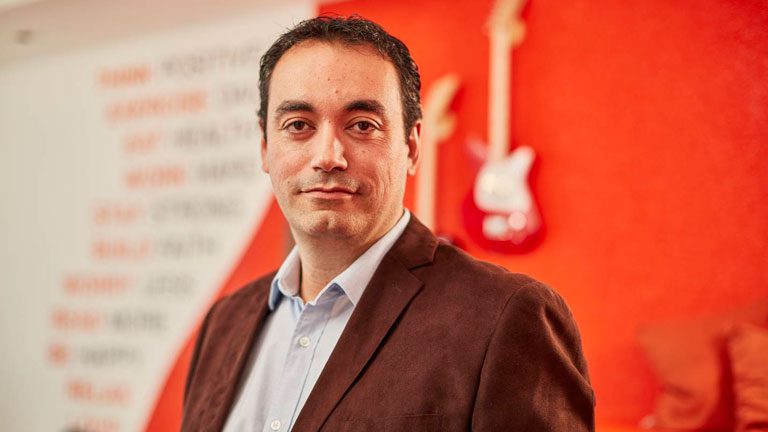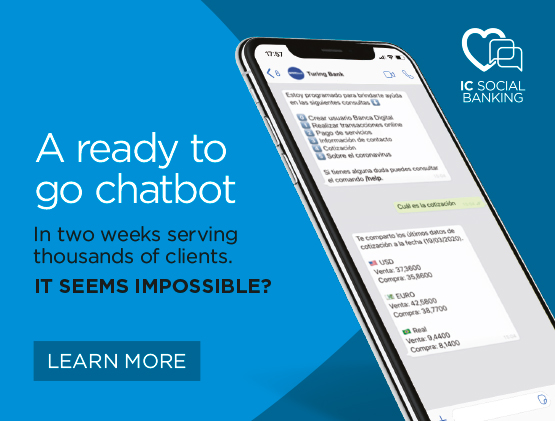
EL FINANCIERO | Costa Rica|
Currently, most apps are for simple transactions, but the customer experience can be enhanced by being more proactive in offering personalized services.
EL FINANCIERO | Costa Rica:
“Entities are realizing that they have very limited banking,” said Germán Rama, Infocorp’s VP of Product. (Photo for EF)
The stage in which users only find transactional features in banks’ mobile apps could evolve toward a new one in which they will find suggested services in the same way that Netflix suggests new content.
The new capabilities go hand in hand with solutions based on artificial intelligence, which cross-reference data from the financial services used by customers, as well as from purchases made with debit or credit cards, their preferences and profiles, increasing performance and results.
“You can come up with banners or personalized information that increase conversion,” said Germán Rama, VP of Product at Infocorp, a Uruguayan firm with a Latin American presence that provides digital solutions for the banking sector. “Entities are realizing that they have very limited banking.”
What is the best mobile banking channel in Costa Rica?
The acceleration of online services in the financial sector with the pandemic left behind a certain lethargy with which digital channels had been developing and goes beyond the introduction of chatbots for customer queries. Next-generation services enable banks to make better use of data. Such solutions use a widget, a small application or tile-like program that executes specific functions on a platform.
A PwC report indicates that only between 11% and 22% of banking executives globally admitted before 2020 that their institutions were prepared to focus their business model on the customer, optimize their channels, simplify operating models, innovate, proactively manage risk and regulation, and leverage the information available to them as a competitive advantage.
The firm EY also pointed out, in another report, that in 2021 one of the challenges for banking is to “lay the foundations for smarter operations,” using artificial intelligence to automate or accelerate manual processes, adjust the level of straight-through processing, deploy automation and generate “hyper-personalized” products.
New capabilities
Banks could leverage customer usage data from financial and consumption services, based on behavioral patterns they store every day, to directly offer new products.
For example, from the payment information of Uber-like transportation services, the customer could be sent an offer directly in the banking app to schedule their trip. The same could be done for meal orders, online purchases and, in the future, the purchase of tickets for sporting events, plays and concerts, choosing the seats they prefer.
Banking apps are currently for transactions and do not even provide suggestions on how to use the bank’s services based on the customer’s behavior.
With regard to shopping, promotions and discounts could be generated for users to purchase their preferred brands according to their usual behavior on regular days and holidays such as Father’s Day, Mother’s Day or Christmas. It would also be possible to generate offers for customers’ favorite restaurants.
Many financial institutions have discount and promotion programs in stores available for their clients, the list of which is difficult to find and for which a text message is often sent which may be received as unwanted or junk mail (spam). With the solution of entering this information in the app, the client will find exactly the are of interest to them according to their consumption behavior.
In all these cases the interaction is directly with the banking entity, thereby cutting out intermediaries and fees.
The bank can also generate suggestions and opportunities for the use of its own services. For example, customers know that they can automate utility bill payments, but they rarely receive information on how to do so, let alone promotions.
They usually also deposit their salary money in a savings account and leave it there, making withdrawals or making purchases with the associated card. The bank may suggest managing the funds in an overnight account where they earn more interest and the balance is available when needed.
If, in addition, they have a steady savings income in an account, the bank could suggest a long-term deposit based on the verification of the transactions carried out. For example, if the savings usually remain intact for three months, a certificate for that term could be suggested, with benefits for the client (more interest) and the bank (in the management of the funds).
In the same way, notifications are generated for loan and credit card payment days, car financing suggestions according to the customer’s status and preferences, as well as alerts on card or account balance usage percentages associated with the person’s salary in order to offer a financial service that allows the customer to make it through the pay period in a trouble-free manner.
“That extra mile is what, in a way, makes the difference in the customer experience. The bank goes a step further,” Rama stressed. “It’s what Waze does, which used to have the route saved and you had to indicate it, but now automatically suggests it. Netflix does the same thing.”
Full article: https://www.elfinancierocr.com/tecnologia/como-pueden-los-bancos-implementar-el-modelo-de/V5UFQS4S7ZDM5NKSSWWVISX5AY/story/




